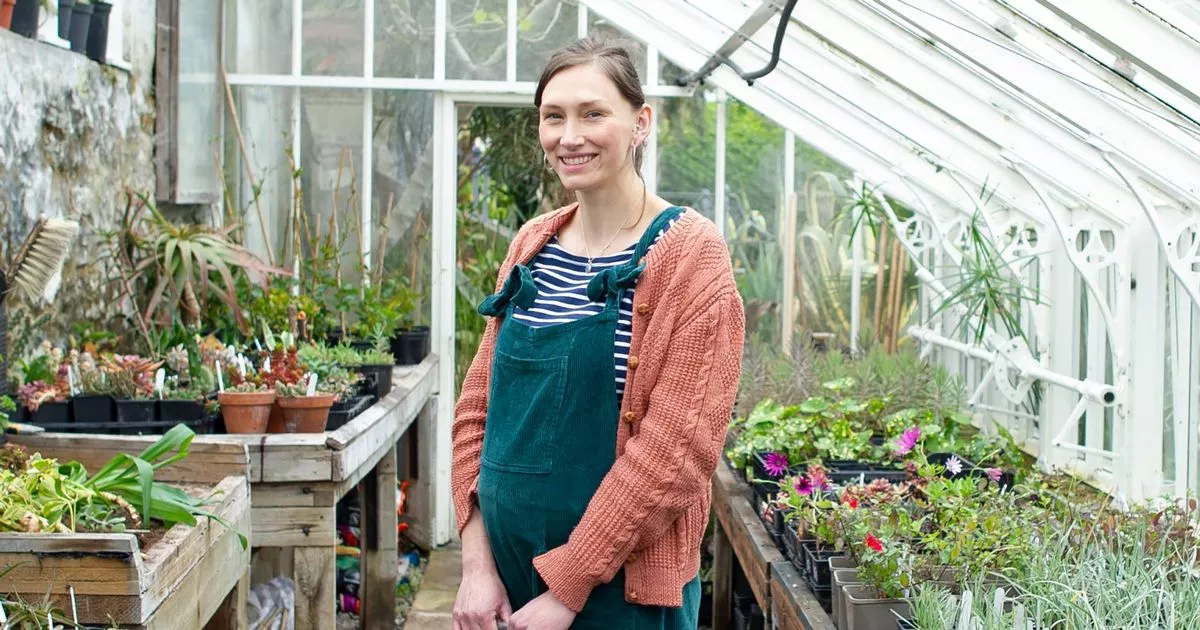As the summer comes to a close, many people will think their gardening days are nearing the end for another year, but it’s not quite the case as there are plenty of jobs to get on with, according to expert David Fryer
As summer draws to a close, many gardeners might assume their outdoor duties are winding down for the year, but this isn’t entirely accurate as there remain numerous tasks to tackle. Indeed, one gardening specialist emphasises there’s a straightforward job that all greenhouse owners should undertake.
Property owners with greenhouses still have several responsibilities to fulfil in order to maximise their plants and harvests before summer concludes. To stay ahead of the approaching autumn chill and ward off frost, an expert has provided crucial guidance for this month.
Specialist at Mr Fothergill’s, David Fryer, has shared vital recommendations. Boasting more than 30,000 Instagram followers, the company has been motivating gardeners since 1978 – and David has dispensed various tips, including methods for eliminating weeds from gardens.
He has now focused on September gardening advice, with one being particularly crucial. David explained: “Autumn is a key time of change in the garden, as the days are drawing in and the temperatures are coming down. This is often a time to start clearing up and preparing for next season, but it is essential to remember that this one’s not over yet, and it can still offer more.
“When it comes to vegetables, you will want to harvest the last of your summer crops before the frost takes them – and that can be sooner than you think, depending on the season. In your greenhouse, tunnel plants are better protected, and crops like tomatoes will still be harvesting well into September.”
He further advised: “To prepare for the upcoming months, pinch out the growing tips and remove a few extra leaves early in the month to encourage the fruit to ripen. As we enter October, any remaining unripe or green tomato fruit can be picked from the plants and ripened indoors.
“They will do so quickly in a warm place when kept in a breathable container (like a paper bag). To speed up this ripening process, add an apple to the mix, which produces natural ethylene.
“Outside, suppose you’re growing pumpkins and squashes as part of your harvest. In that case, they will be mature and complete in colour and need cutting in October at the latest – just in time for those pumpkin-carving evenings as Halloween approaches.
“Courgettes will finish with the frosts of early winter, and growth will slow considerably before then. As a family favourite, carrots are ideal to be harvested in the autumn, too.
“However, if you’ve grown more than you need, you can cover them in straw to protect them from frost and dig them up just when you need them for those roast dinners and casseroles throughout winter.”
Gardening experts have advised that a variety of crops should be harvested in September. This includes fruits and vegetables such as apples, pears, autumn raspberries, tomatoes, runner beans, courgettes and squash.
Root vegetables like potatoes, onions, carrots and beetroot also ripen during this month, and leafy greens such as cabbage, lettuce and spinach can also be gathered. Interestingly, September is likely the most bountiful month for British grown produce.
Summer crops, including salads, tomatoes, courgettes, cucumbers and runner beans remain highly productive during this time of year. Additionally, autumn crops such as apples, pears, squash and leeks are nearly ready for harvesting.
The Royal Horticultural Society (RHS) has stated: “Harvesting top fruit such as apples and pears begins in earnest in September. The last of the plums and autumn-fruiting raspberries are also picked now.
“Continue to sow vegetables for overwintering, to mature next spring, including turnips, spinach, winter lettuce and oriental vegetables. Plant overwintering onion sets.
“Spring cabbages that were sown last month are probably ready for planting out. Cover them with reused netting to stop the pigeons shredding them.”


